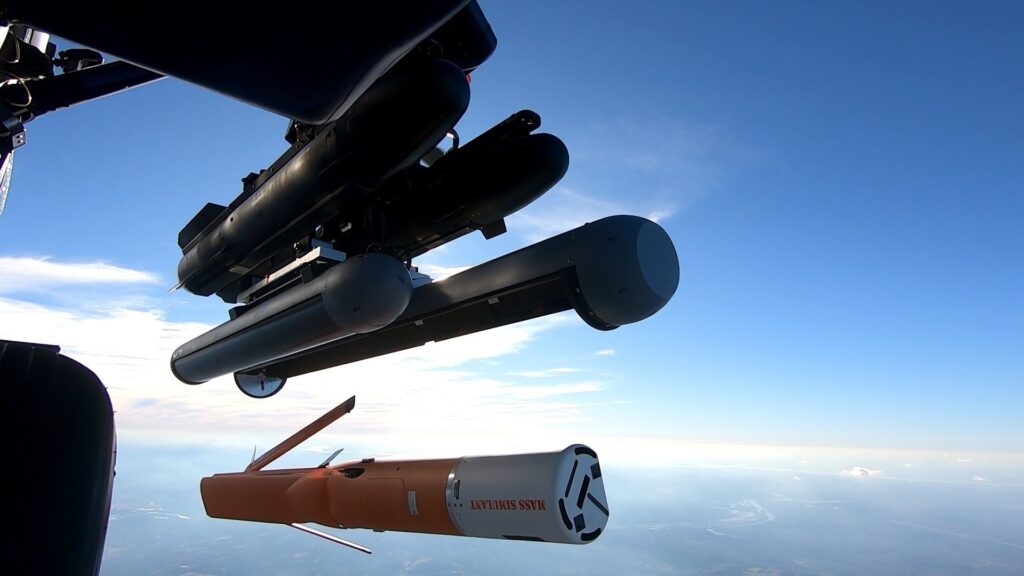The UK Army's reliance on rotary wing aircraft, a legacy dating back to the introduction of the Sikorsky R-4 in 1944, is set to continue despite the arrival of the Future Long Range Assault Aircraft (FLRAA). While the FLRAA tiltrotor is expected to revolutionise air assault operations, the Army recognises the ongoing need for versatility and the need to modernise existing fleets to meet evolving threats.
The Black Hawk, a mainstay in the Army's utility and transport operations, is undergoing a comprehensive revamp with the addition of launched effects, enhanced autonomy, and a new engine under the Improved Turbine Engine Program (ITEP).
Army Colonel Ryan Nesrsta, program manager for Utility Helicopters at the PEO Aviation, highlighted the importance of interoperability between the existing rotary wing fleet and the incoming FLRAA. He stressed the need for continued investment in the rotary wing portfolio to ensure that the Future Vertical Lift family of systems can function effectively.
The Army Aviation Center of Excellence emphasised the different roles played by each aircraft type. While FLRAA will enable long-range air assaults, Black Hawks will remain vital for shorter distances. The Chinook remains the only heavy lift helicopter in service, and the Apache is the sole attack aircraft. The Army Aviation Center underlined the overarching goal of supporting ground troops, irrespective of the aviation platform employed.
In the context of multi-domain operations (MDO) and the Joint All-Domain Command and Control (JADC2) environment, rotary wing aircraft are expected to play a crucial role. They will continue to provide rapid transport of personnel and equipment, while also becoming more integrated into data networks. This will enhance situational awareness and improve engagement times by connecting to the wider battlefield picture.
The Black Hawk autonomy program has made significant strides since its debut at Project Convergence. The Army is collaborating with the Defense Advanced Research Projects Agency (DARPA) to further mature autonomy technologies, with the goal of eventually achieving optionally piloted operation.
Col. Nesrsta outlined the three key areas of development: sensor fusion, autonomous algorithms, and full-authority fly-by-wire flight controls. These advancements will facilitate a gradual transition from cognitive offloading to minimally crewed, and ultimately, optionally crewed systems.
The Army is also exploring the potential for autonomy in the Lakota platform. While the Black Hawk serves as the current demonstrator, the service is evaluating alternative platforms and pursuing opportunities to accelerate innovation.
The first two GE Aerospace ITEP powerplants have been delivered for installation on the UH-60M Black Hawk. While previous experience with engine integration provides valuable lessons, the Army recognises the significant challenges involved. The goal is to achieve the first flight of the upgraded Black Hawk in late Fiscal Year 2025 or early Fiscal Year 2026.
Looking ahead, the Army is actively engaging with industry to identify ways to improve rotary wing aircraft. This includes incorporating Modular Open Systems Architecture (MOSA), managing obsolescence, integrating IT systems, and enhancing survivability. The Army is receptive to industry proposals for adaptable, affordable systems that can be readily upgraded to counter evolving threats.
The Army is drawing upon lessons learned from the H-60 Victor program, which successfully demonstrated the integration of a MOSA-aligned mission avionics architecture into a legacy aircraft. This experience is informing the development of a phased approach to modernize the Black Hawk's avionics, equipping it with a digital backbone that enables rapid and cost-effective integration of new capabilities.
The Army is also exploring potential applications of derivative technologies from the Future Attack Reconnaissance Aircraft (FARA) program. Technologies deemed suitable for adaptation will be integrated into existing fleets within available budget constraints.
The Army's plans for modernising the Black Hawk fleet represent a commitment to maintaining a robust rotary wing capability for the foreseeable future. These upgrades will enhance the platform's performance, increase its survivability, and ensure its relevance within the evolving battlefield landscape.
Article
Business

Black Hawk Gets a Makeover: Army Unveils Plans for Modernisation and Future Vertical Lift

